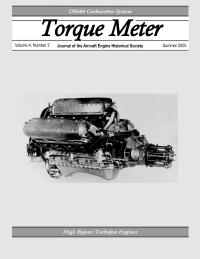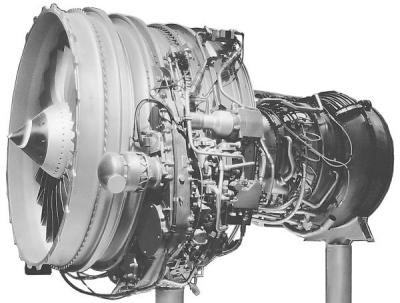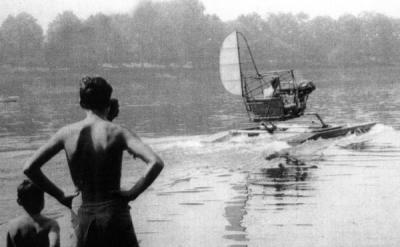
Torque Meter
Summer 2005 Issue
 |
 |
High Bypass Turbofan Engines Readers will recall that with a low-bypass turbojet engine, some of the fan air is "bypassed" outside of the "hot" core, but within the casing of the engine before being mixed with the hot airflow at the jet efflux. The high-bypass turbofan engine may usually be recognized by the fan air being ducted outside the engine casing some one-third along the cowling. However, some of the smaller turbofans (e.g. Rolls-Royce Tay and FJ44; the Pratt & Whitney Canada PW500 series), to increase performance and reduce specific fuel consumption and noise, mix the hot and cold airstreams within the engine casing just before the efflux, through an integrated nozzle. |
 |
A Story About Two Small Old Aircraft Engines Uncle Tom Maddock and his brother Charles had built the pontoons in 1929 and mounted an old fuselage and engine on them. They ran their creation up and down the canal in front of the farm. Tom said that cars would stop to watch them and one observer said, "It’s Nungessor and Coli, they finally made it!" (Nungessor and Coli were intrepid French airmen who took off from France for a trans Atlantic flight attempt in 1927 and were never seen again) The idea so intrigued me that as a teenager in 1952, I asked Uncle Tom if I could have the pontoons. He was delighted that I was interested and told me to help myself. My friend, Ed Franco-Ferreira and I loaded up the pontoons and took them to my mother’s garage in nearby Titusville, New Jersey. The pontoons were wooden frames covered with fiber-board that looked like Homasote. By the time we sealed and painted them they were so heavy that there was no danger of them ever becoming airborne. We bought a used O-145 Lycoming aircraft engine and propeller in running condition through Trade-A-Plane for $50. |
|
Aero Engine Drawings by Frank Munger |
